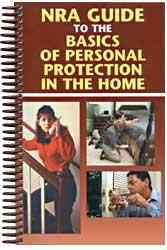The NRA keeps referring to the 2nd Amendment as a “sacred” right, but I always thought that anything sacred was usually somehow given to us by God. But in fact, the right of Americans to own guns without any connection to some kind of military unit didn’t come from God at all. It came down from a 2008 Supreme Court decision that was decided by one vote. And in fact, the NRA was reluctant to push the Heller case to the Supreme Court because it looked probable, if not likely, that Justice Kennedy would swing over to the liberal side of the nation’s highest tribunal and that would be the end of that.
Immediately after Heller, various pro-gun groups began challenging state and local laws which allowed for private ownership of guns, but made the licensing process so onerous or arbitrary that owning a gun was difficult enough, using it for self-defense, particularly self-defense outside the home, was basically a non-existent right. In Washington, D.C., the U.S. District Court ultimately found the city’s license requirements unduly restrictive, but in California, a fairly restrictive process in San Diego County for the issuance of concealed-carry licenses was upheld.
This past week another California gun case made it all the way to the Supreme Court, but by a 7-2 margin, Kennedy, Alito and Roberts all moving to the other side, the Court refused to hear a case from San Francisco whose law states that “no person shall keep a handgun within a residence owned or controlled by that person unless the handgun is stored in a locked container or disabled with a trigger lock.” The law was challenged by, among others, an “elderly lady” who believes that she could never defend herself against an intruder if she had to “find her glasses, turn on the light, find the key to the lock box, open the lockbox….” If this isn’t a civilian version of the Keystone Cops, I don’t know what is.
The Ninth Circuit admitted in its ruling upholding the law that it was creating a “burden” on the core right of the 2nd Amendment, but it found this burden to be outweighed by the evidence presented by the City of San Francisco that “guns kept in the home are most often used in suicides and against family and friends rather than in self-defense and that children are particularly at risk of injury and death.” Uh-oh, here comes all that public health research by Kellerman, Hemenway and others about the risks of unlocked guns rearing its ugly head in a federal court. The pro-gun folks have lavished no end of expense and energy trying to discredit such research, and what they got for their efforts was the research was used to justify a limitation on their most sacred right.
The plaintiffs in this case, of course, produced some research of their own, which consisted of data from the Department of Justice showing that 60% of all home robberies take place between 6 P.M. and 6 A.M., precisely the period when people might be sleeping and their need for self-defense is “most acute.” But there’s only one little problem with this data because it also shows that only 1-2% of all forcible home robberies resulted in serious injury to someone present in the home, which means in terms of real numbers that only 10,000 individuals nationwide might have needed to defend themselves against a criminal assault.
The next case which might be reviewed by the SCOTUS involves a challenge to the San Diego law which makes it difficult for anyone to carry a concealed gun for self-defense. Let me give the plaintiffs in that case a little free advice: I wouldn’t push the self-defense argument too far even if Scalia used it as the basis for Heller in 2008. What the SCOTUS recognized in that decision was the fact that 300 million guns are floating around in civilian hands. But that’s not the same thing as saying that every pair of those hands can walk around with a gun.


Recent Comments